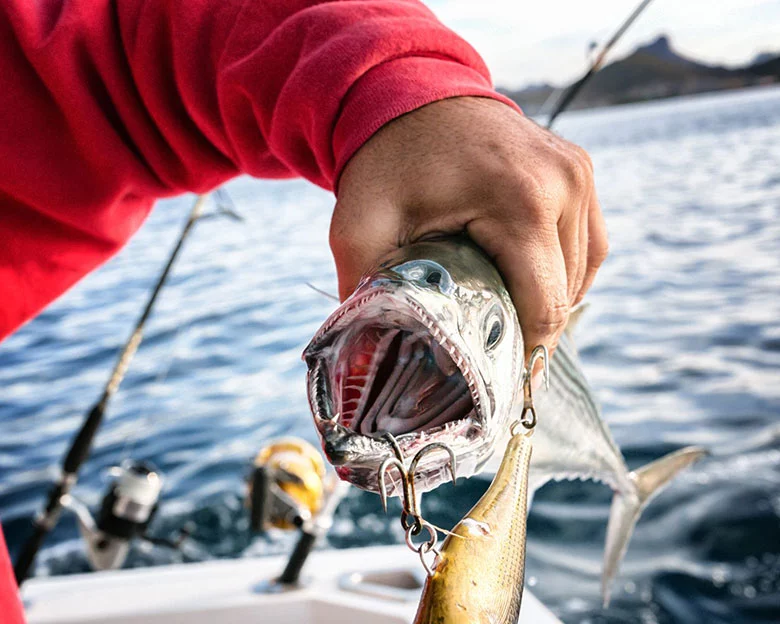Have you ever wondered if fish feel pain, and do fish feel pain? The debate about whether or not fish can feel and perceive pain differently from other animals has been ongoing for years. However, recent studies show that fish possess nociceptors and fibers for sending pain signals, and they exhibit all signs of feeling pain.
It’s time to put the debate to rest: science says yes, fish do feel pain.
This may come as a surprise, as fish are often seen as cold-blooded and emotionless creatures. However, evidence suggests that they not only feel pain but also have the capacity to suffer. The American Veterinary Medical Association argues that fish should receive the same consideration as other vertebrates, and it’s time for us to take a closer look at how we treat these animals.
In this article, we will explore the evidence that supports the idea that fish feel pain and what this means for our treatment of these animals. So, let’s dive in and take a closer look at the fascinating world of fish pain perception.
Key Takeaways
- Recent studies suggest that fish have nociceptors and fibers for pain signals, indicating that they can feel pain and suffer.
- Fish pain perception can take up to 2 seconds to register due to their nervous system stemming from the brain.
- Ethical implications are important to consider, as treatment may need to change if fish are found to feel pain.
- Understanding fish pain perception is crucial for animal research and fishing practices to prioritize welfare and respect for living beings.
Fish Pain Perception

You already know that fish have nociception and possess fibers for sending pain signals, but did you know that it can take up to 2 seconds for their pain perception to register?
This means that fish may feel pain differently than humans, but it doesn’t mean they don’t feel it at all. Studies have shown that fish have a nervous system stemming from a brain, and to know if fish feel pain, we need to know if their brain is involved.
The ethical implications of whether fish feel pain are important to consider. The American Veterinary Medical Association argues that fish should receive the same consideration as other vertebrates.
If fish do feel pain, then how we treat them may need to change. Pain is a great teacher and motivator for animals, and if we want to treat fish ethically, then we need to understand their pain perception and adjust our practices accordingly.
Evidence of Pain in Fish
Evidence of pain in fish is supported by their possession of nociceptors and fibers for sending pain signals and their ability to seek pain relief and produce alarm chemicals to warn of threats. These are all indicative of a pain response in fish that is similar to that of other animals.
In fact, studies have shown that trout possess nociceptors that are responsible for sending pain signals to their brain, and zebrafish have been observed seeking pain relief by rubbing against a rough surface.
Fish behavior also provides evidence of their ability to perceive pain. Some fish have been observed producing an alarm chemical when threatened by a predator, which suggests that they are able to recognize and respond to potentially harmful stimuli. Additionally, fish may exhibit pain management strategies, such as avoiding painful stimuli or seeking out comfort when in pain.
These behaviors support the idea that fish are capable of feeling pain, and highlight the importance of considering their welfare in animal research and fishing practices.
Consideration for Fish Welfare

Consider the fact that over 100 billion fish are caught and killed for human consumption each year, and think about the impact that has on their welfare.
Fish farming has become a popular alternative to wild fishing, but even that practice raises ethical considerations. In these farms, fish are raised in crowded tanks where they are vulnerable to diseases and parasites. They are also subjected to stressful conditions such as overcrowding and insufficient oxygen levels.
As we continue to exploit fish for our benefit, we must consider their welfare. The American Veterinary Medical Association argues that fish should receive the same consideration as other vertebrates.
This means providing them with proper living conditions, pain management, and humane slaughter methods. By prioritizing the welfare of fish, we can ensure that they are treated with the respect they deserve as living beings.
Frequently Asked Questions
How Do Fish Perceive Pain Differently From Humans?
Fish pain perception differs from humans due to unique neural pathways. Fish possess nociceptors, but the extent to which they feel pain is debated. Studies show trout have fibers for sending pain signals.
Are There Any Species Of Fish That Do Not Feel Pain?
There is no known species of fish that does not feel pain. The fish pain controversy has led to debate over fish welfare standards. Scientific evidence supports the idea that all fish can perceive and feel pain.
Can Fish Experience Emotional Distress As A Result Of Pain?
Fish emotions are often overlooked in discussions of animal welfare. However, studies suggest that fish can experience emotional distress as a result of pain. It is important to consider these factors in our treatment of these creatures.
How Does The Fishing Industry Address The Issue Of Fish Pain And Welfare?
The fishing industry addresses fish pain and welfare through sustainability practices and consumer awareness. Sustainable fishing methods reduce stress and injuries, while labeling and certifications increase awareness of ethical fishing practices.
Are There Any Ethical Considerations Surrounding The Consumption Of Fish If They Do Indeed Feel Pain?
As a consumer, you are responsible for considering the ethical implications of consuming fish if they feel pain. The scientific evidence suggests that they do, so it is up to you to decide what actions align with your values. Remember, every choice has a consequence.
Taking Action: Empathy and Care for Fish’s Wellbeing
Congratulations! You’ve just learned that fish feel pain; science supports this idea. It’s time to start treating fish with the same consideration we give to other animals.
Think about it this way: if you accidentally hit your toe on a table, you feel pain, right? That’s because your body has nociceptors and fibers that send pain signals to your brain. Well, fish have those same nociceptors and fibers, and they exhibit all the signs of feeling pain that we do.
In fact, research has shown that fish experience both physiological and behavioral responses to noxious stimuli, which are similar to what we see in other animals. For example, they may exhibit increased heart, respiratory, and cortisol levels in response to a painful stimulus. They may also avoid that stimulus in the future, just like we would.
So, the next time you go fishing or visit an aquarium, think about the pain that these fish may be experiencing. Consider how you can improve their welfare and reduce their suffering. It’s time to give fish the respect and consideration they deserve.

